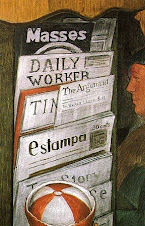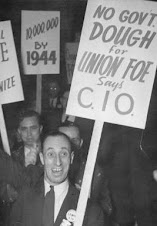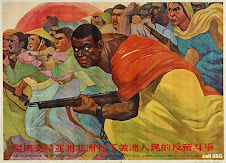By Martha Grevatt
Detroit
Published Oct 22, 2010 7:58 PM
To say members of UAW Local 5960 are angry would be an understatement.
Since General Motors emerged from bankruptcy last year after coercing UAW members to grant huge concessions, workers at the company’s idled Lake Orion, Mich., assembly plant have been waiting to learn the details of some new, supposedly “innovative ways to staff these operations.” This vague language in the contract modifications was supposed to lead to a plant-specific agreement to bring them back to work building a subcompact vehicle — one that would otherwise be produced south of the border.
“Shock and awe” could well describe the state of mind of line workers who have just recently learned that the 40 percent of them with the lowest seniority will be called back to work at only half the wages they made before being laid off. They are furious at GM and also at the International of the UAW, first for agreeing to such an outrageous settlement and second for not even allowing the membership to vote on it.
More than 200 Local 5960 members and their supporters rallied Oct. 16 outside the UAW’s international headquarters, Solidarity House, under the theme, “Real Solidarity isn’t tiered.” There were dozens of homemade, heartfelt signs. Among the slogans were “Equal Pay for Equal Work” and “One Union, One Tier.”
The children of Paul Maturen and Dawn Maturen carried a sign that read, “Our Daddy isn’t half a man and there are no half people.” Paul is a soon-to-be second-tier Lake Orion worker. Dawn Maturen co-organized the protest with Local 5960 worker Nick Waun.
“The CEO of GM makes nine million a year,” Waun told the crowd. “That’s enough to carry 300 workers at top-tier pay.”
A number of UAW activists spoke in solidarity with Local 5960. Among them were former Local 235 President Wendy Thompson, former International Representative Frank Hammer, Local 600 Committeemember Gary Walkowicz and GM retiree Stacey Kemp. Ford retiree Ron Lare read statements of solidarity from autoworkers in Brazil and Canada.
Greg Clark, shop chair of Local 23, was warmly welcomed. Local 23 in Indianapolis recently shot down a concessionary deal to get supplier JD Norman to buy their plant and cut their pay by almost 50 percent. UAW members came from Indianapolis and from Michigan, Ohio and Kentucky to show solidarity.
The high point came when Olen Ham, one of the last living participants in the 1936-37 sit-down strike, addressed the crowd. It was that 44-day occupation involving four GM plants in Flint, Mich., and others around the country that forced GM to recognize the UAW. “They want you to go back to the days of nonunion wages and benefits,” said Ham. “Do not back up.”
A line must be drawn
Two-tier was first introduced in the airline industry in the 1980s, but is now a widespread tactic for lowering wages. Up until now the lower wage scale was negotiated for future employees, while workers with higher seniority kept their same higher rate of pay. This was a menace to solidarity, as some workers wound up doing the same work as others for half the pay. As those UAW members with higher seniority retired, leaving a majority of lower-wage workers, companies like Caterpillar, American Axle and Delphi were able to bring everyone’s pay down to the lowest tier. It’s hard to claim to be pro-labor and defend two-tier.
The Lake Orion situation poses a new danger to the labor movement. Here we have a large segment of the workforce accustomed to the “traditional” wage suddenly and arbitrarily forced into the bottom tier. The goal of GM is to make the entire plant second-tier.
Management’s pretext is that paying lower wages is the only way GM can make profits on low-budget, subcompact vehicles such as the Chevrolet Aveo built in Lake Orion. In fact, the plant will also build a higher-end compact, the Buick Verano.
The correct response from the UAW would be, “So you can’t make big bucks on the Aveo, so what? You made $2.2 billion in six months. We have to keep a roof over our heads and eat and we would like our kids to get a college degree. They’ll be hard-pressed to find a good-paying job without one, especially in Michigan. That’s more important.”
Unfortunately, UAW International President Bob King has embraced the capitalist position that all the company’s plants must be profitable.
The UAW is up against formidable foes — not only in Detroit but on Wall Street. On Sept. 13, after the announcement that there would be an initial public offering of GM stock in November, the Wall Street Journal wrote that “the UAW’s no-strike pledge at GM expires in 2015. ... The UAW’s contract with the car companies is about as thick as the phone book in a medium-sized city. Only when the contract shrinks to the size of a pamphlet will investors know things have changed. The union contract should be attached as an exhibit to the offer prospectus, because it’s so critical to the company’s future. ... Hopefully ... the UAW will reinvent itself to become a partner instead of an impediment.”
Instead of an impediment to profits, the UAW International’s partnership with GM — and Ford, Chrysler and the supplier firms — is the biggest obstacle to rank-and-file workers who want to resist.
At the protest, some of the signs said, “Kickin’ ass for the working class.” The young workers holding those signs represent the future of the UAW — and they are keeping alive its proud history of struggle.
The writer, a member of Local 869, also spoke at the Oct. 16 rally.
Email: mgrevatt@workers.org
Articles copyright 1995-2010 Workers World. Verbatim copying and distribution of this entire article is permitted in any medium without royalty provided this notice is preserved.
Subscribe to:
Post Comments (Atom)










































No comments:
Post a Comment